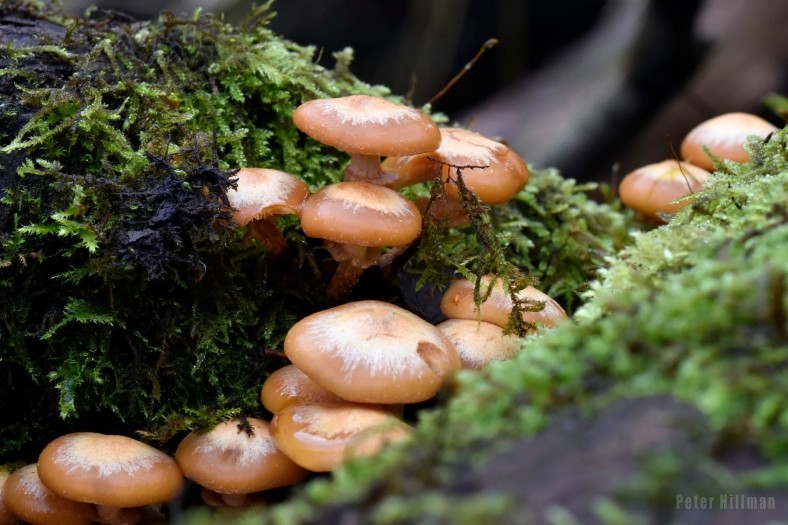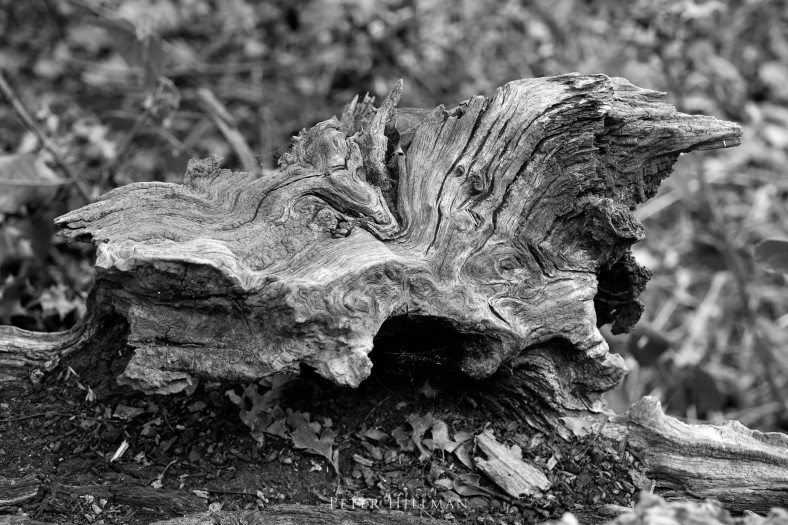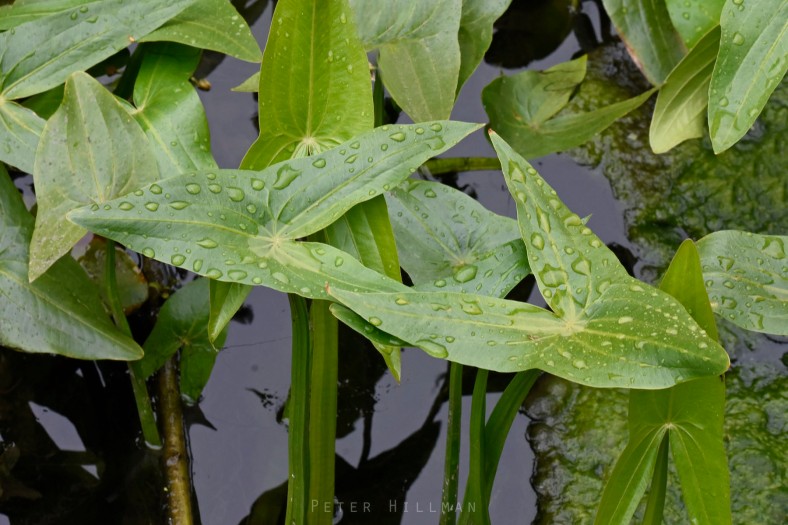I came across this green, wavering cushion which is around 25 mm (1 in) in diameter in my birdbath. The water is crystal clear, but here was this thing quite happily growing there. I don’t know what it is. It might be an alga of some kind, or it could be be something from outer space which hitched a ride on a meteorite. Just hope I don’t get any ‘pod people’ growing in the flowerbeds …
Category: Photography
Kentish Snail
x3 images. Double click to enlarge.
The Kentish Snail (Monacha (Monacha) cantiana) is one of the commonest snails I notice on my walks along the edge of local woodland.
The shell has a lovely mottled appearance, which can vary. It is one that can be found in gardens, too, but I have not seen any here in my own.
Netted Slug
Pergamasus
x3 images. Double click to enlarge.
I just really like some names of species (or in this case the genus) so I used it as the title for this post.
Pergamasus are verocious predatory mites of soil and leaf-litter. And unfortunately not much more info is forthcoming.
Here are three individuals I discovered .. yep, under that plant pot.
One of The Smallest
x2 images. Double click to enlarge.
This is one of the smallest mites I have come across. I discovered it by simply lifting up a small plant pot. And once disturbed they never stay still for a second, so you have to try and focus and snap them on the move. In fact, I can only see them when they move.

I have manged to get them down to genus which Eupodes. They are one of the trombid mites (Order Trombidiformes), and are so small they are usually measured in µm (micrometres). Even with the Raynox conversion lens I have had to crop these images. They are around 0.2-0.5 mm in length. Quite distinctive mites with pinkish legs and antennae, and pinkish longitudinal dorsal stripes which varies in width. Seen all year round in soil, leaf litter and amongst mosses – or even sheltering under plant pots.
Friday Frog
Kind of a take on Steve Gringold’s excellent Nature Photography Blog, and his wonderful ‘Frog Friday’ series. I came across this one today, a Friday, in the back garden. This is quite a large and well-marked one.
Mighty Mite
x3 images. Double click to enlarge fully.

A close relation to the spiders and harvestmen, this mite is one of the Anystis sp. – known as the whirlygig mites. One of the slightly larger mites I have come across, it moves very rapidly across surfaces, hunting invertebrate prey. Notice how far back the eyes are.


Hey You! Slow Down Will You?

Hello all! Sorry I have been away for so long, and thank you to those who have been enquiring after me! 🙂 A message popped up today that it was my WordPress.com Birthday – 5 years! Where have all those years gone!
I thought I would return with a bit of humour. This Small Black Ant Lasius niger had a keen interest in this Garden Snail Cornu aspersum, to such a degree it managed to get stuck inside its shell!
‘Flaming June’ is living up to its name here, and wherever you are in the world I hope you are all safe and well and enjoying your season! I am very much looking forward to catching up on your posts!
All the best and take care … Pete
Yup … More Slime Forecast …

Not Ghostbusters slime … but Mycetozoa – slime moulds, more discovered this time in local woods. This species looks to be the same as in the previous post Trichia botrytis. Like all slime moulds, they creep across a surface very slowly devouring food until they run out, and when they run out they will release their spores.

These appear to be in the early stages of ripening. Each Sporocarp – the bright fruiting bodies you see – are around 5 mm (1/4 in) tall and 0.8 mm (3/64 in) in diameter, so they can be easily missed out in the field unless you keep an eye out for them. These were found on the underside of fallen bark on the ground.

More Slime
Coral Slime Ceratiomyxa fruticulosa
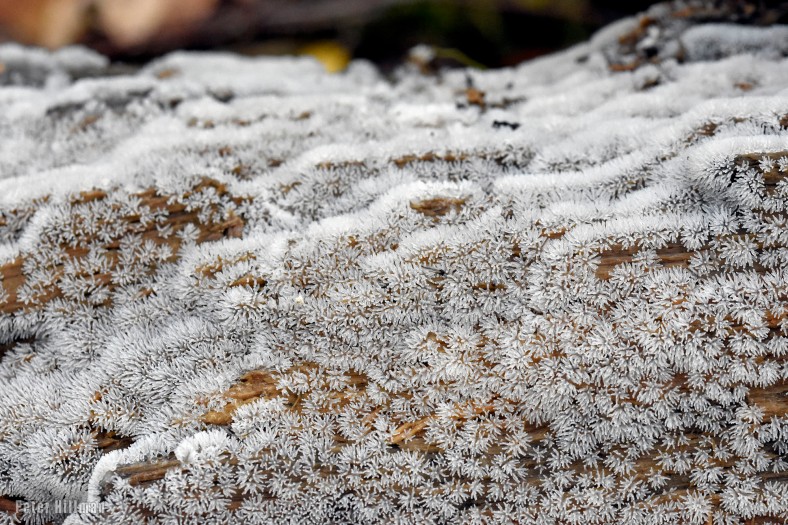
Whilst initially looking like ice crystals or coral, it is actually a slime mould – which is not a fungi but belongs to the kingdom Protozoa – single-celled organisms.

This colony was found covering a large area of a fallen and decaying tree trunk.
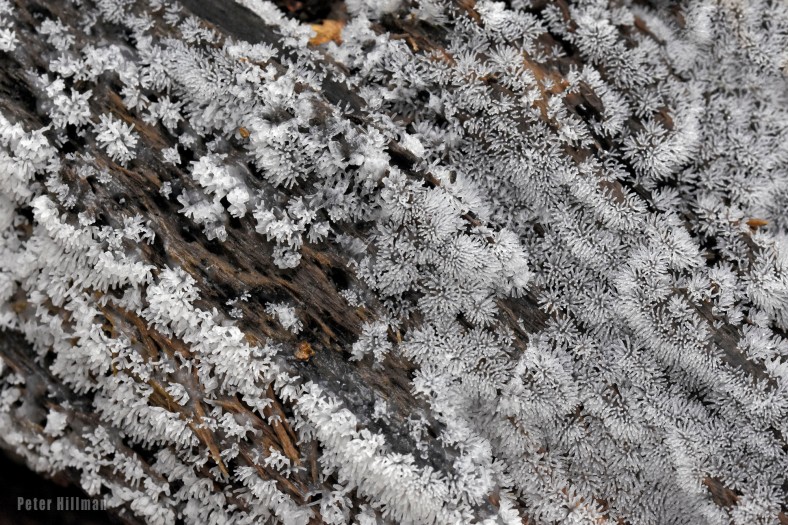
Although many slime mold species fruit on wood they do not form a penetrating and absorptive mass of hyphae in the wood substrate, but form structures called plasmodia which are naked (without cell walls) masses of protoplasm which can move and engulf particles of food in an amoeboid manner. Slime mold plasmodia creep about over the surfaces of materials, engulfing bacteria, spores of fungi and plants, protozoa, and particles of nonliving organic matter. At some point, plasmodia convert into spore-bearing structures.
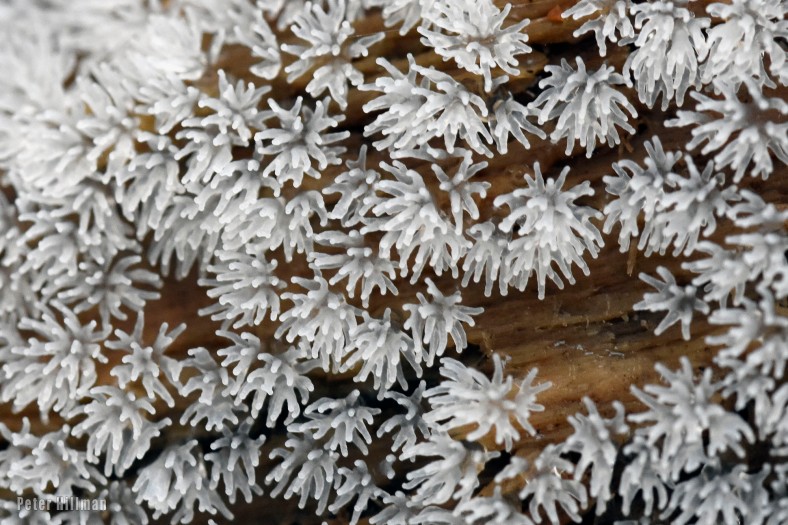
Sheathed Woodtuft Kuehneromyces mutabilis
A blob of Red Jelly
Well not quite – it is an Oribatid mite found in soil under a clay flower pot. They are also called Beetle Mites or Moss Mites. The order Oribatida has species which range from 0.2 mm long to 1.4 mm (1/128 in to around 1/16 in) long … and this is somewhere inbetween.
These very small mites occur in soil and humus, and occasionally on tree trunks and foliage. They are mostly harmless and play a role in breaking down organic matter. Amongst the most numerous soil arthropods, these mites are important in the development of soil fertility.
This one is so well polished you can almost see my reflection in it.



A New Order
The 1000th species to be added to this site was only discovered yesterday in my back garden, and it not only introduces this new species but also a new order of insects which I haven’t featured before – the Psocoptera.
This order includes the barklice and the booklice, and in some quarters prefer to be called barkflies. They are quite small insects ranging from 1.5-7 mm long, and can be confused with psyllids, jumping plant lice, which do what the names says and jumps when disturbed, where as barklice don’t jump. The reference to ‘lice’ is a bit of a misnomer as they are not parasitic but free-living insects.
Barklice feed on various ‘microflora (algae such as Pleurococcus, lichens and fungi) or on more general organic matter which often occurs on surfaces of bark or the foliage of trees. Not all barklice are associated with trees, as some are found in low vegetation, leaf litter and under stones. Some species are fully winged, and some are only partially winged or wingless.
There are around 4,400 psocid species worldwide, 1,000 in Europe, and 100 in Britain, and many go unoticed and unrecorded, although most every tree is likey a home to them. 68 of these species come under the barklice or barkflies umbrella which are found outdoors, and the remaining booklice are found indoors. These are wingless and grow up to around 2 mm long. They are most commonly found in human dwellings and warehouses where they feed on stored grain, book bindings, wallpaper paste and other starchy products, and on the minute traces of mould found in old books. They can sometimes cause damage to stored museum collections of insects and plants. A few Psocoptera live in bird nests feeding on feathers and dead skin cells.
Psocoptera are regarded as one of the most primitive amongst insects, as their mouth parts show little modification from those of the earliest known fossils.
Valenzuela flavidus – At around 3 mm (1/8 in) long, this is quite an attractive species with pale yellow colouring and distinct brown markings. During summer and autumn it is mainly found on branches of deciduous trees and bushes, though occasionally also on conifers and evergreen branches. During winter and spring it is found in leaf litter.
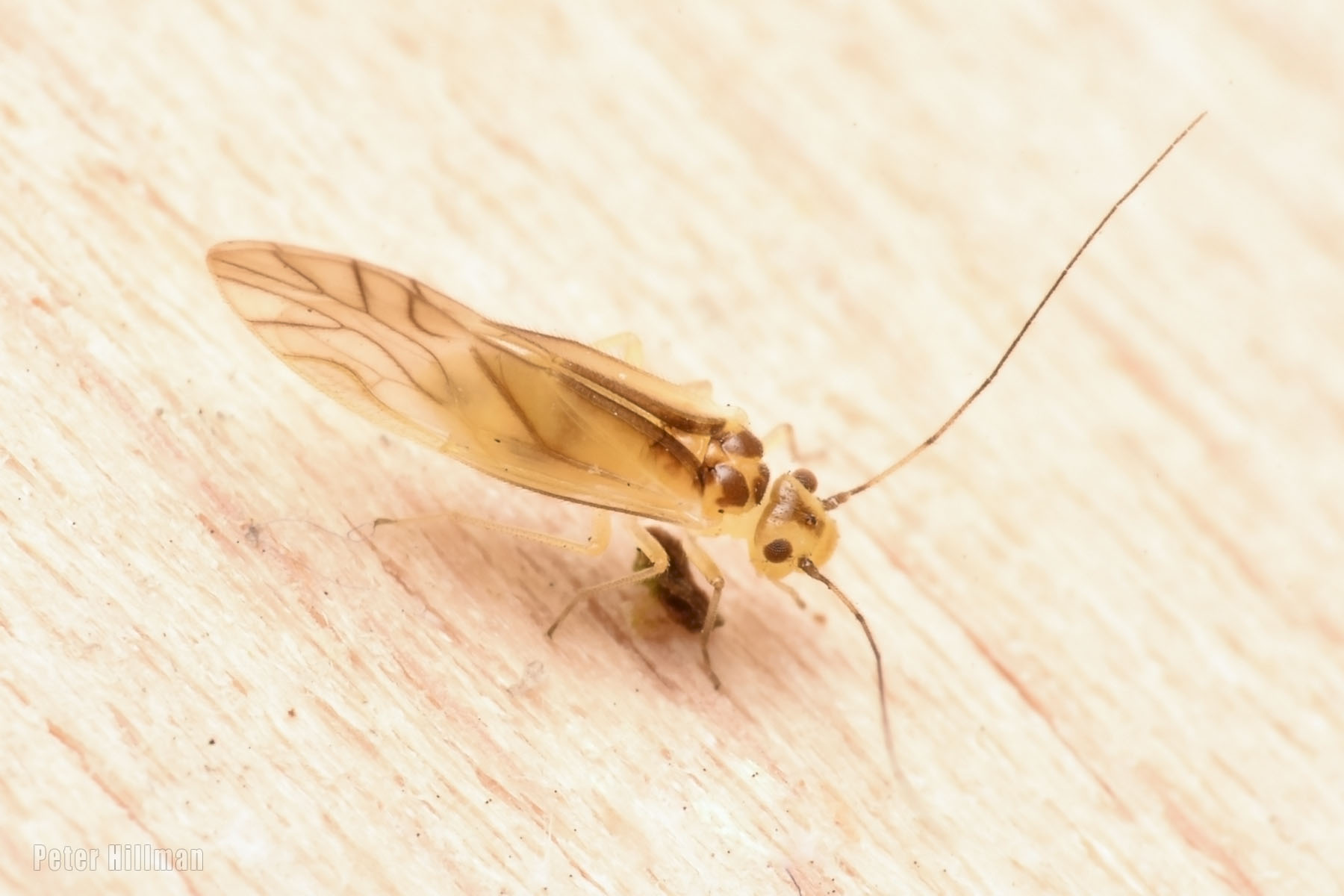
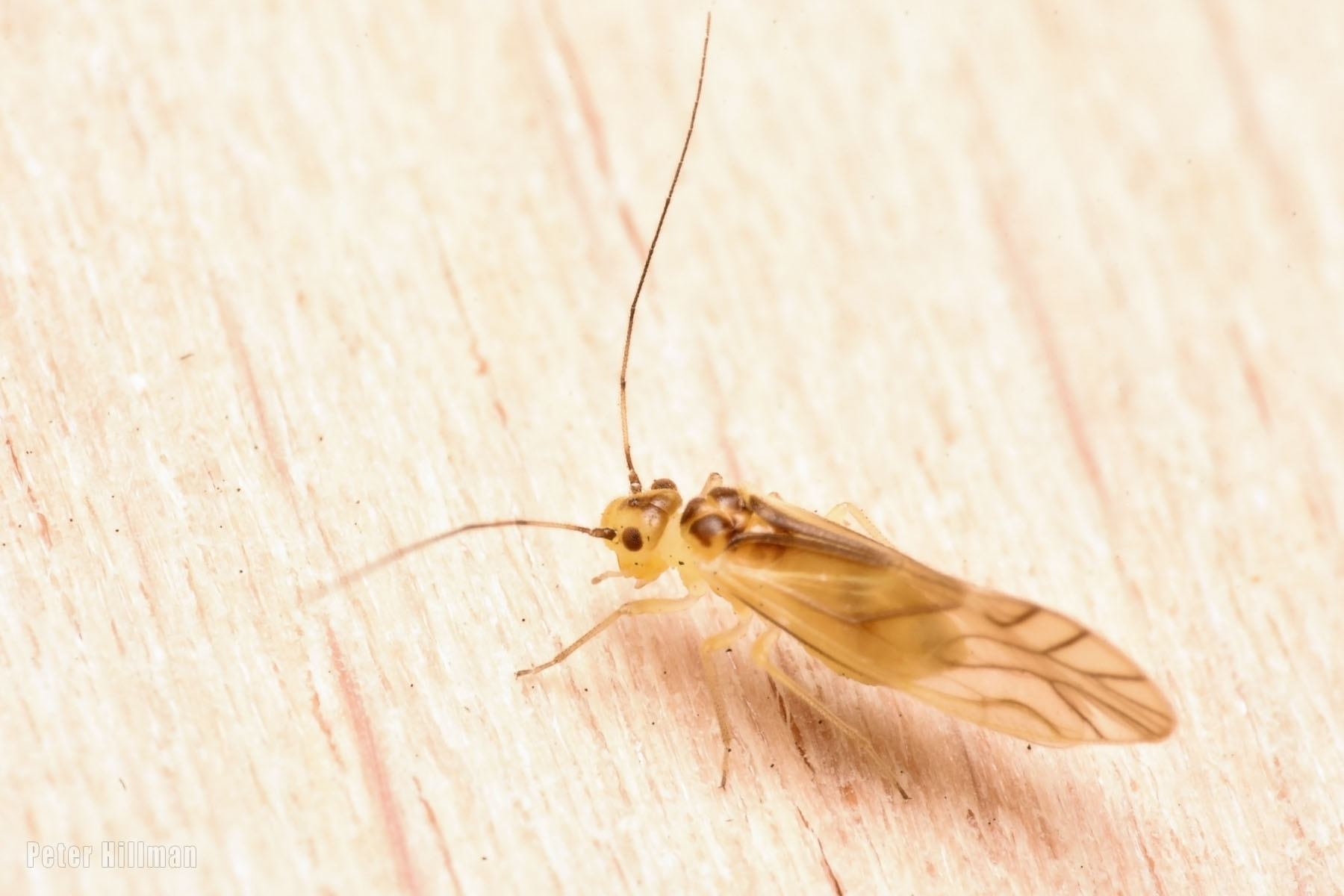
Got Its Stripes
Striped Millipede Ommatoiulus sabulosus
This is one of Britain’s largest millipedes, and it has to be one of it’s most attractive. Growing up to around 30 mm (1 3/16 in) long, it is very well marked and unmistakable with 2 conspicuous deep orange stripes running the entire length of the body. I discovered it under a detatched piece of bark in my local wood. It feeds on dead and decaying plant material, and can sometimes be found on tree trunks and walls, or under logs in a broad range of habitats including, woodland and meadows, with a preference for sandy soil.


Using the ‘classic’ Gutenberg ‘block’ to add images I have discovered that you can frame them, and you don’t get that landing page with the adverts either, so you should be able to double-click to zoom in without the added fuss.
The Cheeky One
Common Shiny Woodlouse
Under The Bark II
Under The Bark
I keep some pieces of tree bark in an area of the garden, along with a few branches, which help to give shelter to animals. Occasionally I peer underneath. I know these slimy critters aren’t to everybodies taste, but they all play their role in keeping nature’s balance, and are little wonders in themselves. The trio of Common Chrysalis Snails in the top image are around 4.4 mm (1/4 in) long, and the Discus Snail in the last image is a little bigger at 7 mm in diameter. Iberian Three-band Slug centre looks to be a young juvenile.



Microscopic Life
Simocephalus vetulus – I really needed a microscope to capture this very peculiar freshwater life form, so apologies in advance as this is not as clear as some of my other images, as I was really trying to attempt the impossile with a camera, and handheld to add. But I wanted to show you something you may have not seen before.
This semi-transparent microscopic organism is actually a crustacean, which also includes crabs and lobsters. It feeds by filtering small phytoplankton (microscopic marine algae) species from the surrounding water. It is found in freshwater environments like small ponds, ditches, and canals. It is known as an early colonist of newly constructed ponds, or after disturbances in established water bodies.

The Queen
The Art Of Decay
Fish In Your House
Silverfish (Lepisma saccharina) – In the wee dark hours if you get up for a cuppa tea, or to pop to the loo, you might see the back end of one of these little critters as it scurries off to escape the sudden glare of light. It is from a primitive group of insects and has “negative phototaxis”, which means it will instinctively flee from light.
It is a nocturnal scavenger which feeds on carbohydrates and sugars. The species scientific name, ‘saccharina’ literally means ‘starch eater’. It will eat glue, book bindings, paper, photos, sugar, coffee, hair, carpet, clothing and dandruff. It can become a pest in libraries and museums for it voracious appetitie for starches. Outdoors it lives under rocks, in leaf litter, caves, and ant nests. They can live for a year without eating. It has a lifecycle of around 2 1/2 to 3 1/2years, so it is quite a long-lived insect.
I initially found this one in my kitchen sink. Sometimes they are also found in bathtubs. In days gone this gave the impression that they came in the house via the drains, but no, they simply find our sinks and sanitary wear too slippery to climb out once they are in.
Oh, and anybody up for a photo challenge, give these little fast scurrying blighters a go. I was so lucky just to get these shots in.


200 Moths
I have just uploaded the 200th species of moth to A Nature Journey, and when you consider there are around 2,500 species in Great Britain that is but a drop in the ocean. Anyway, here are selection of moths, some you have seen before, and some perhaps you have not.
If you wish to visit the moths page you can journey from ‘here’







Floating On A Dream
The last day sundown of July was quite something special. From my backyard I cannot see the sun itself set as it slips behind a wooded hill and neighbouring houses. Yet last night the way the lowering sun reflected its dying light off the clouds it was almost like a 360 degree sunset. The sky in the image was taken facing the east.
I am always taken by clouds, and the different types and layers that decorate the sky, and how the changing light interplays with all these elements. Sometimes it is like peering out the window of our world with fresh, clean eyes, making a connection with the cosmos that stirs the emotions perhaps on a primitive level. After all, that window out is the very same window that humankind has been looking through from the dawn of ages. And maybe, just maybe, it is that recognition that we are a part of something much bigger and that sense of ‘feeling’ and connection that trully makes us human and what and who we are.

Who Said Meadow Browns Can be Dull And Boring?
Meadow Brown (Maniola jurtina) – It was a morning where these butterflies were showing off their colours with their wings splayed fully open. This is the more brightly coloured female with its rich orange flashes on the wings. Meadow Browns appear to be a penny for a dozen (old saying) at present, and one can tend to easily ignore them as they don’t always have the flashy colours or patterns like other butterflies do, and they mainly hide in the grass until they are flushed out as you pass by. Yet when you come across them with their wings open on full display to the world … it can kind of take your breath away.

Arrowhead
Small White
Pieris rapae – This is a female with her two spots per forewing. So delicate and delightful, this is always a welcome visitor to the garden. It was so windy that day, it was a wonder she could flutter at all with her fragile wings. But she is tougher than she looks, and has to be.

Double-click image for a closer look.
Beautiful Bumble
Early Bumblebee (Bombus pratorum) – This is a small shaggy-haired bumblebee, and probably my most favourite of the bumblebees – if I really had to choose one. I adore its colour combination of bright orange tail and lemon-yellow abdominal and thoracic bands. But they are little devils to photograph, for they are always so brisk and busy in their work. I count myself lucky to get the shots I have here when this one visited my rear garden back in May. It is a male with long yellow hairs on his face.


Double-click images for a closer look.
For further interest visit the ‘Bees’ page.
Armoured And Amazing
Common Rough Woodlouse (Porcellio scaber) – Under a loose strip of bark in the back garden I found quite a few of these hiding. Believe it or not in wet weather they can become oversaturated, that’s why some may appear indoors. Intially all woodlice may look the same, but there are quite a number of different species and they all play an important roll in the ecosystem.
Of note, and perhaps of interest to fellow photographers, I used triple diffusion in these images. One a preformed plastic diffuser fixed directly to the speedlight itself, over this I roughly placed an opaque sandwich bag left a little scrunched (yes, you read that right. I have even used socks, milk cartons, trimmed and shaped plastic folders, amongst other things by way of experment in the past), and finally a rigid fabric diffuser attached to the front of the macro lens by the Raynox lens convertor. All images were taken handheld, with the advantage of a fairly level and comfortable surface, and the abiliy to ‘brace’ both arms to help with focus at such close magnification and to reduce camera shake.



Double-click images for a closer look.
For further interest visit the ‘Woodlice’ page.
Nice And Cosy Until …
… I lift a rock and shed some light. The rain has been very welcome here, but the trouble is once it starts it doesn’t know when to stop. Between the rain I decided to see what might be hiding under a few rocks in the garden. Here I found this rather snug millipede, which looked like I had awoken it from a daze. It is one of the ‘tail-less’ Cylindroiulus, of which there are 4 UK species. I also got a bonus just in frame and a new species for me here of a very small woodlouse. It is called the Common Pygmy Woodlouse (Trichoniscus pusillus agg.) which grows up to 5 mm (almost 1/4 in) long.

Double-click image for a closer look.
For further interest visit the ‘Centipedes and Millipedes’ page.
These Broken Wings
A Bold Young Blackbird
Blackbird (Turdus merula) – This beautiful young blackbird visited my pond this afternoon as I was watering the garden, and was so bold it stayed a while and allowed me to get quite close. Good job, too, because I only had my macro lens fitted. The last day of May and the last photos of May with a lovely bold young Blackbird to make you smile.

© Peter Hillman ♦ 31st May 2020 ♦ Rear garden, South Staffordshire ♦ Nikon D7200
874 And Counting
It is coming up to 4 years this June that I have been blogging on WordPress. I have done a species tally of the ‘life’ featured on this site, and it is around 874 species, featuring all forms of flora and fauna I have been most fortunate enough to encounter on my life’s journey so far. Below is a selection of photos of just some of these amazing and diverse wonders of nature I have been witness to over the years.
I would like to thank all my dear bloggers here for their continued support, and for their interesting and wonderful contrubutions in their own blogs from all corners of the globe. There are a a lot of wonderfully talented folk here with great passion for their art, whether it is painting, poetry or photography, or any other interest they may have and are sharing on this platform. So a big thanks to all for sharing!
During these very trying times of the coronaviris pandemic it has been more important than ever that people have been able to connect throughout the world, offering their own support in some way to one another, but with social distancing in mind. It has also highlighted how important our green spaces are to us, how dear they are to us, and how nature is good for our troubled hearts and minds, and how being close to it can help in healing. No matter where we are, we are never far from nature, and reconnecting with it is so very easy, and hopefully it is not only hearts and minds that are healed in this process, but the planet as a whole with all its wonders of life.





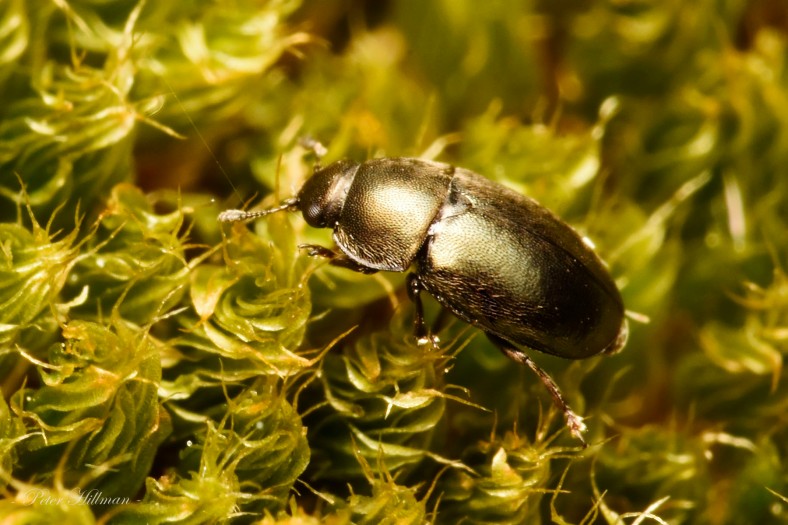






Peppered Moth
Biston betularia – I have seen this one a few tmes over the years, but never the completely black form (carbonaria), which is a favourite in genetic evolutionary studies, harking back to the days of the Industrial Revolution and the high levels of soot that was emittted into the atmosphere at the time. The trees became so covered in the dark soot the moth lost its natural camouflage and stuck out like a sore thumb. It was more vulnerable to predation, until forms came along which were darker and survived much better. The Peppered Moth was not just the only moth species to have adapted to the environmental conditions of the time, and there are other melanic forms around which I have seen. Double-click image to enlarge.

© Peter Hillman ♦ 22nd May 2020 ♦ Rear garden, South Staffordshire ♦ Nikon D7200
Small Magpie
Witches Butter
Nostoc commune – Is it a fungus? Is it an algae? When I first came across this strange toffee coloured, jellied mass covering the entire roof of a garage complex, I had no idea what it was. At first I thought it was an algae, especially as most of it appeared to be thriving in pools of stagnent water, and then finally decided it must be some species of jellied fungus. I was also reminded of an old movie called The Blob starring Steve McQueen, but I was wrong on all accounts. After some Google investigations I discovered to my utter surprise that it was in fact a bacteria, a cyanobacterium, to be precise.
You can learn much more about this remarkable organism via the Witches Butter page.
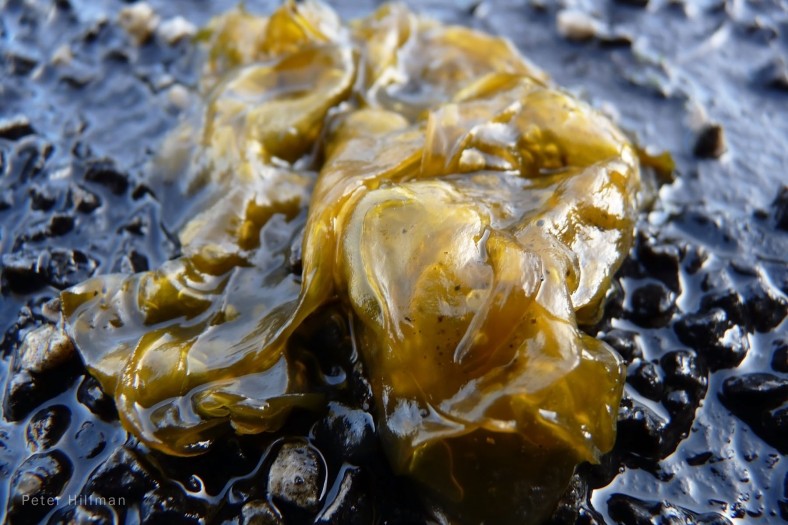

© Peter Hillman ♦ 9th January 2013 ♦ urban garage block, Staffordshire ♦ Panasonic DMC-FZ38
Sitting On A Bowl of Sunshine
Pink Supermoon
A pink supermoon is not really pink. The name is a northern Native American reference to an early-blooming wildflower, ground phlox, and is first seen across North America as spring begins.
I was playing hide-and-seek with clouds when trying get the pink supermoon, but I was taken by the silver ‘moon’ lining on the clouds. So there is always a silver lining, even in the deepest, darkest of moments.


© Peter Hillman ♦ 8th April 2020 ♦ From rear garden, Staffordshire ♦ Nikon D7200






















